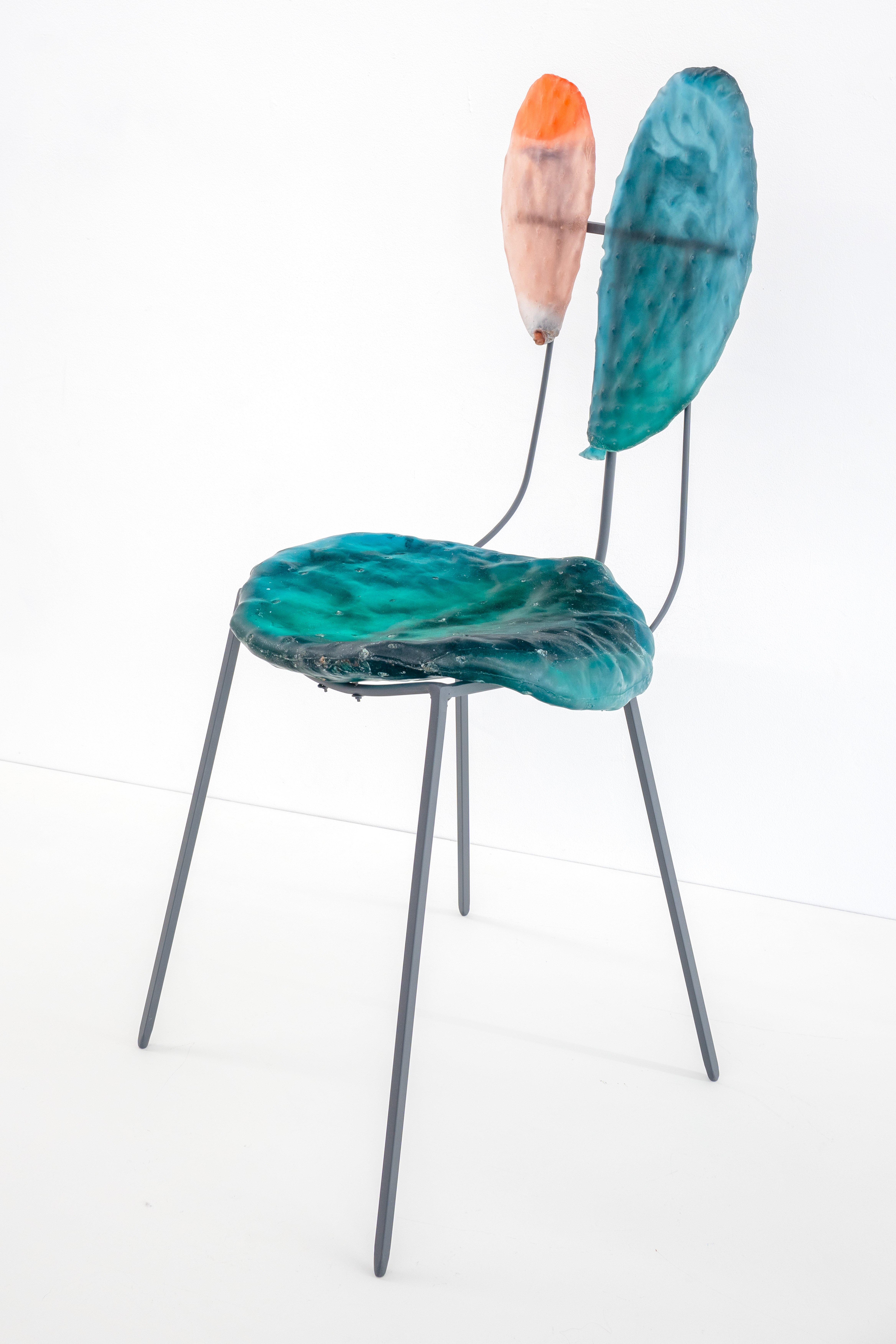To understand the work of Hadrien Gerenton and to which generation he belong, the image of the lizard and the nose is most telling. In 2019 New York’s Socrates Sculpture Park commissioned Gerenton, who at the time was making metallic sculptures of lizards and cacti, and Loup Sarion, who creates giant sculptures of human noses, feet and tongues,to make a sculpture for a rooftop garden. The result: a dark metallic burgundy-red lizard entering a giant blue nose. The sculpture created by the duo literally serves as a meeting place of the imaginary worlds of two different young artists and of a new generation as a whole. This is a generation of young artists with a renewed interest in the surreal, such as Ariana Papademetropoulos, Chason Mathams and Loup Sarion. They create their own narratives and imaginary landscapes, and where the props, taken from those landscapes, serve as artworks in the world of the spectator. Shortly after his residency at De Ateliers (2015 - 2017) [fig. 2] and subsequent solo exhibition at Galerie Martin van Zomeren, Gerenton conducted a series of travels to Greece, Morocco and Mexico. In these warm places he gathered cacti to cast into resin sculptures, first and foremost because of their shape and their attributed mythical powers.
As sculptures, or as sculptural elements, these cacti seem to give a sense of awareness to the object. When placed correctly in an installation, it is as if the sculpture knows that a spectator is there, and the sculpture has suddenly become shy.
- Hadrien Gerenton
Later, while traveling in Asia, Gerenton encountered komodo monitors, whose prehistorical forms were also adapted in Gerenton’s body of work. For example for Delirious (2018), an outdoor sculpture exhibition, Gerenton tied two giant lizards, painted in metallic purple and blue hues to trees with dog collars, as if they were two aggressive Dobermann dogs guarding their master’s belongings. In later exhibitions, lizards and cacti were combined into installations that one would almost describe as anti-human since both actors, lizard and cactus, live best in habitats or time-periods in which the human species would not prosper.
Hadrien Gérenton (Fr, 1987) graduated from De Ateliers in 2017 and lives and works between Brussels and Rotterdam. His work has recently been shown at Galerie Martin Van Zomeren (Amsterdam, 2018), Lustwarande (Tilburg, 2019) and Emerige Mecanat (Paris, 2021). His work was most recently acquired by the Centre Pompidou, Paris as well as the Dutch KPMG collection.





























